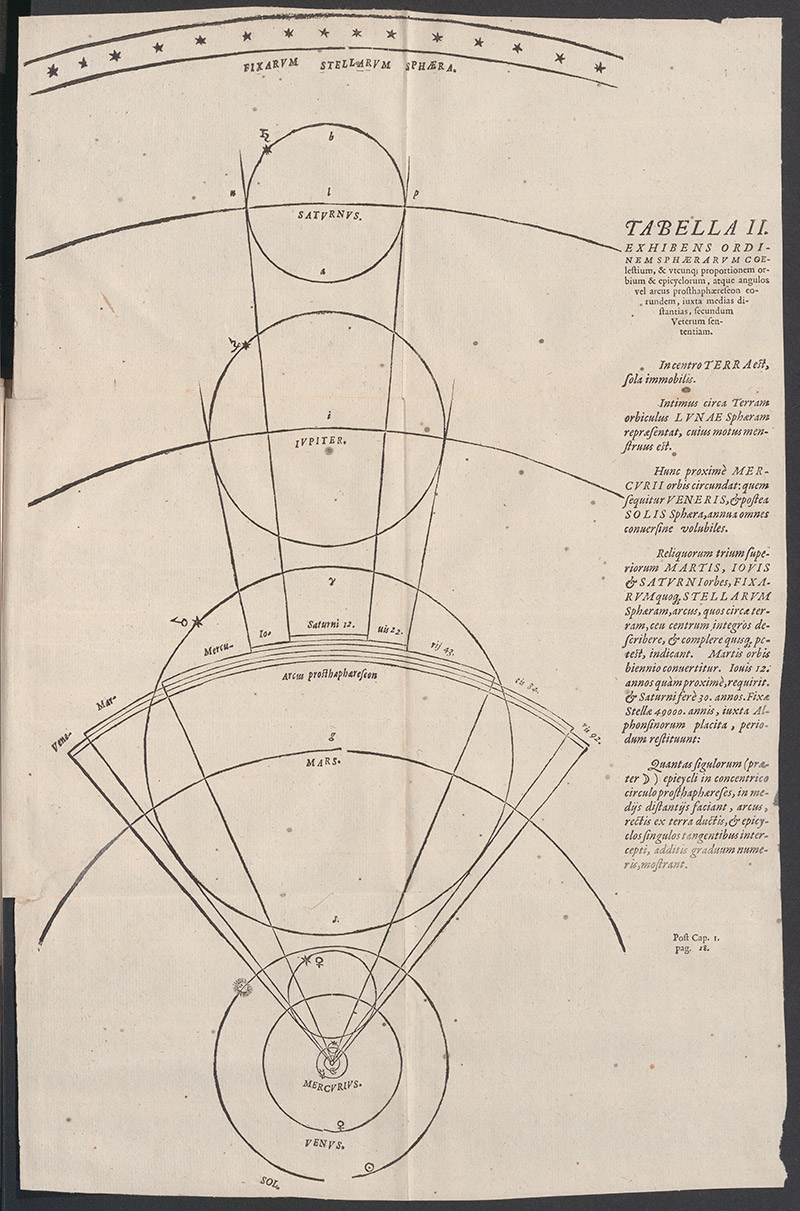Table II

- Woodcut depicting the pre-Copernican system.
- Johannes Kepler (1571-1630).
- Prodromus dissertationum cosmographicarum, continens Mysterium Cosmographicum, de admirabili proportionem orbium coelestium, deque causis caelorum numeri, magnitudinis, motuumque periodicorum genuinis & propriis, demonstratum, per quinque regularia corpora geometrica.
- Tübingen: Georgius Gruppenbachius, 1596.
Table II shows the sequence of the planets (ordinem sphaerarum coelestium) , the correspondence between orbits and epicycles, and angles or arch lengths of planets based on the prosthaphaeresis logarithm or angular parallax (the angle between two lines of observation), along with their average distances, all of this according to the system of the ancients. Thus the Earth is the only static body, which is located in the center of the universe: In centro terra est, sola immobilis. The text of the diagram includes information on the length of the revolution of each of the planets around the Earth. For instance, Mars takes two years, Jupiter 12, and Saturn 30.